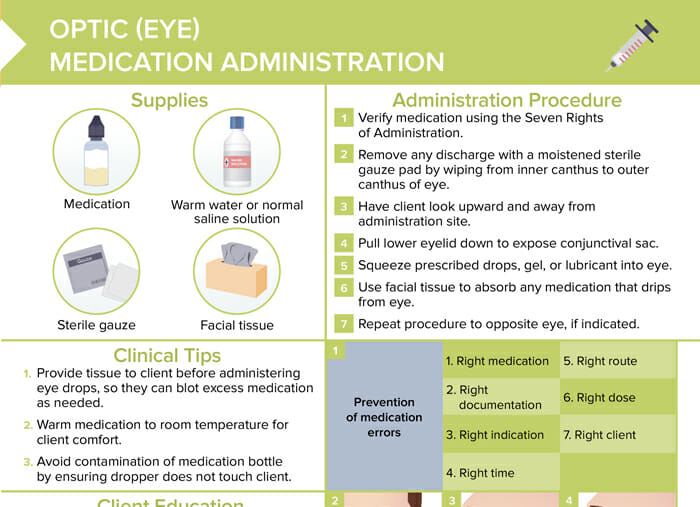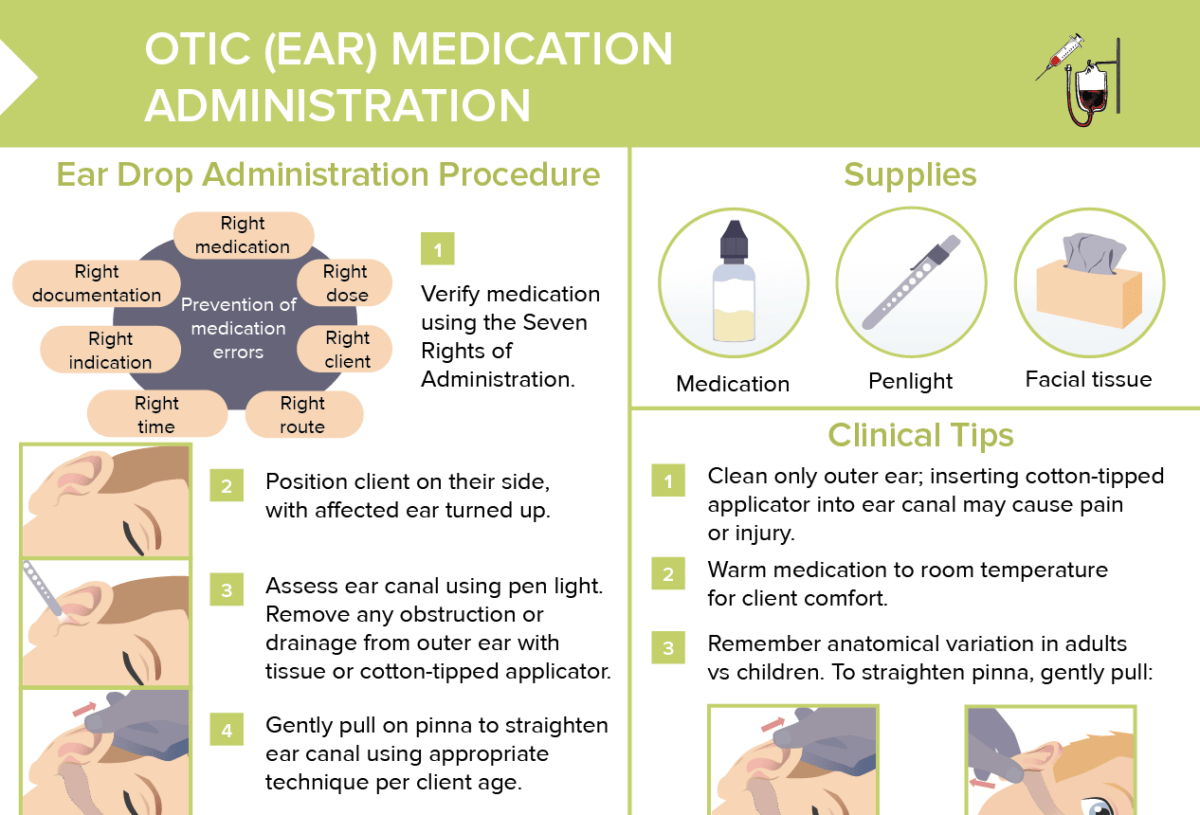What is otic medication?
Otic medication refers to drugs specifically designed for application in the ears. These medications are commonly used to treat various ear conditions such as infections, inflammation, and excessive earwax. They most commonly come in the form of ear drops.
How to put in ear drops
Supplies needed are the medication, a penlight, and facial tissue.
The technique the nurse should employ when instilling otic medication in an adult ear starts with verifying the medication with the seven rights of administration.
Then:
- Position client on their side, with affected ear turned up.
- Assess ear canal using pen light.
- Remove any obstruction or drainage from outer ear with tissue or cotton-tipped applicator.
- Gently pull on pinna to straighten ear canal using appropriate technique per client age.
- Instill prescribed number of drops into the ear canal.
- Massage the tragus.
- Wipe any medication that drips onto client’s face using facial tissue.
- Repeat procedure on opposite side, if indicated.
How to administer ear drops to a child
Aside from being patient with a young client, calming them and providing a positive environment, you need to remember the anatomical variation in adults vs children:
To straighten pinna, pull
- UP and back in adults
- DOWN and back in children
What is the best way to minimize discomfort caused by the instillation of ear medication?
The best way to reduce discomfort for your client when administering ear drops is to warm the medication to room temperature.
Are ear drops supposed to drain out?
The goal should be to keep the medication in contact with the affected area inside the ear for as long as the directions specify, without the medication draining out too early which could reduce effectiveness.
Make sure your client keeps their head tilted for a few minutes after administration.
Client education about ear drops
- Explain indication, action, dose, frequency, and duration of each medication prescription to client.
- Client should remain in side-lying position for several minutes after otic drop administration to allow medication to absorb into ear canal.
- If client is prescribed multiple otic medications, they should wait 3–5 minutes between administration of different types of ear drops.
Advantages of the otic route of medication administration
The main benefit of administering medications via ear drops is that it directly targets the medication to the affected area. Localized treatment improves effectiveness and reduces the risk of systemic side effects. It also provides quick symptom relief and reduces the likelihood of drug–drug interactions and is generally easy and relatively comfortable to use.
What are swimmer’s ear drops?
“Swimmer’s ear” is a colloquial term for acute otitis externa (infection or inflammation of the outer ear). It can be caused by trapped water in the ear, creating an environment that makes it easy for bacteria and fungi to develop.
Ear drops that target this condition usually contain antibiotics for bacterial infections, antifungals for fungal infections, along with steroids (for inflammation) and acidifying agents (discourage bacterial growth).
What happens if you leave ear drops in too long?
Generally, leaving ear drops in the ear is unlikely to cause problems. Potential concerns include:
- Skin irritation
- Infection risk when dropper tip is contaminated
- Systemic absorption (low risk)

